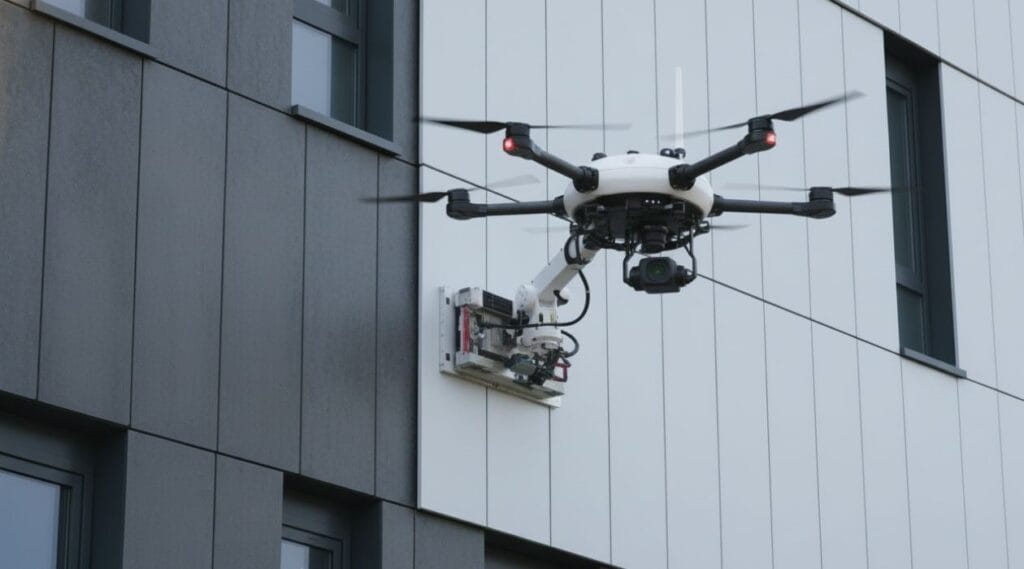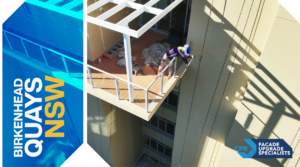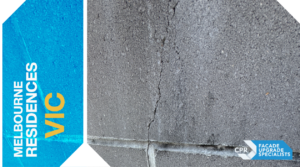Understanding Combustible Cladding in NSW
Combustible cladding in NSW has been one of the most discussed building safety topics in recent years. Following a series of high-profile incidents across Australia and globally, regulatory bodies have tightened safety requirements and introduced new compliance pathways. In 2025, NSW property owners, strata committees, and building managers must ensure their buildings are safe, compliant, and future-ready.
At CPR, we understand the fears that strata owners and building managers face — from the risk of financial blowouts to the stress of navigating complex compliance rules. Our role is to simplify that journey, combining Scaffold-Free™ technology, data-driven systems like SKY-FIMMS™, and trusted expertise to deliver peace of mind with minimal disruption.
What Is Combustible Cladding?
Combustible cladding refers to exterior wall materials that can catch fire and spread flames quickly. Common examples include:
- Aluminium Composite Panels (ACP) containing polyethylene cores
- Expanded Polystyrene Systems (EPS) used for insulation and aesthetics
- Polyurethane foam or other synthetic composite materials
These materials can pose serious fire risks if not installed correctly or if they fail to meet current Building Code of Australia (BCA) standards.
Why It’s a Fire Risk
Combustible cladding can enable a fire to spread rapidly up a building’s exterior, compromising escape routes and increasing the risk to life and property. Even if a product was compliant when first installed, updated 2025 regulations may now classify it as non-compliant — meaning immediate assessment or replacement may be necessary.
Combustible Cladding Regulations in NSW (2025 Update)
The NSW Government continues to strengthen its building safety framework through Fair Trading and the Building Commissioner’s Office. The 2025 update aligns with the Building Code of Australia (BCA 2025) and introduces stricter measures for existing buildings.
Key 2025 Updates:
- Mandatory registration of all buildings with known combustible cladding.
- Expanded requirements for fire risk assessments and independent certification.
- Increased enforcement powers for the NSW Building Commissioner.
For strata committees, this means it’s no longer optional to act. Compliance is now a proactive obligation — delays can result in fines, loss of insurance, and reduced property values.
Is Combustible Cladding Banned in NSW?
Not all cladding is banned, but certain types — especially ACP with a polyethylene content over 30% and EPS systems— are now prohibited for use on most multi-storey buildings.
Compliant vs Non-Compliant Materials:
- Non-compliant: ACP with PE cores, EPS, polyurethane foam.
- Compliant: Non-combustible materials such as solid aluminium, fibre cement, terracotta, or metal composite panels with fire-resistant cores.
Some heritage or low-risk buildings may have exemptions, but they still require a formal fire safety risk assessment and documentation under the new compliance pathway.
Combustible Cladding Register & Inspection Requirements

The NSW Cladding Registration Scheme remains in effect for 2025. Building owners must:
- Register their building if it contains any potentially combustible cladding.
- Undertake a professional fire safety risk assessment.
- Submit compliance documentation to NSW Fair Trading.
Failure to comply may lead to enforcement actions, including rectification orders or public listing on non-compliance registers.
CPR provides comprehensive facade inspections through our SKY-FIMMS™ digital platform, delivering a precise 3D image-based record of your building’s condition. This allows strata committees and building managers to see, understand, and manage compliance with confidence.
Combustible Cladding Removal and Replacement
Step-by-Step Remediation Process
- Initial inspection and assessment (using SKY-FIMMS™ 3D modelling for accuracy).
- Fire safety engineer review and compliance strategy.
- Removal of high-risk materials.
- Installation of certified, non-combustible cladding.
- Final verification and documentation.
CPR’s Scaffold-Free™ systems — including MARS™, PEARS®, and SkyPod® — allow remediation projects such as Cladding Repair and Performance Enhancement to be completed faster and more discreetly, which means for you, less disruption, lower access costs, and safer operations for residents.
Financial Assistance and Cladding Remediation Support
Several NSW and federal government programs continue to offer funding and low-interest loans to assist owners and strata committees with combustible cladding rectification. Additionally, some insurance providers may contribute to assessment or remediation costs if the works are completed by accredited remedial specialists.
CPR’s Accredited Service Partners™ can guide you through funding options and ensure your project meets all eligibility and compliance criteria.
Penalties for Non-Compliance
Non-compliance with combustible cladding regulations in NSW can result in:
- Fines of up to $110,000 for corporations and $22,000 for individuals.
- Rectification orders issued by Fair Trading.
- Public listing on the NSW Building Commissioner’s register — which may affect your insurance and property value.
CPR helps building owners avoid these risks by ensuring compliance from day one, with detailed reporting and transparent quality assurance through SFS360® and SE2EPC® systems.
How to Ensure Compliance in 2025
Ensuring compliance in 2025 means partnering with qualified experts. Look for iCIRT-accredited contractors and firms with proven remedial experience in facade safety.
At CPR, our integrated QA systems and Scaffold-Free™ technologies provide complete oversight from inspection to final certification. Every project is documented through SKY-FIMMS™, giving you a transparent, data-driven trail of proof for insurers, councils, and auditors.
Request a SKY-FIMMS™ demo or book a consultation to see how we can help your building meet 2025 compliance standards without unnecessary disruption.
→ Learn more about our Cladding Remediation Services
Future of Cladding Compliance in NSW
Looking ahead, NSW is expected to continue evolving its cladding safety regulations. The focus will likely shift towards sustainable and fire-safe materials, digital compliance tracking, and the integration of facade maintenance data into national building registries.
CPR’s holistic approach, supported by AssetCare™ long-term maintenance, ensures your building remains compliant, attractive, and safe for decades. As technologies evolve, our commitment to data-driven remediation and preservation remains unwavering — because safety, transparency, and trust are never negotiable.






